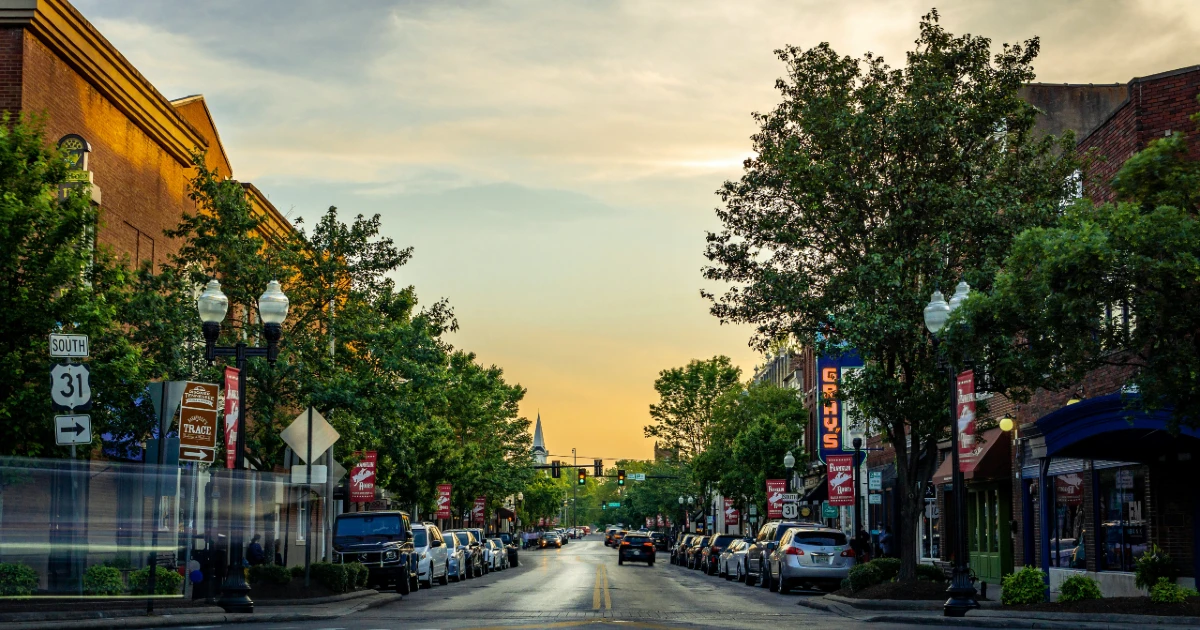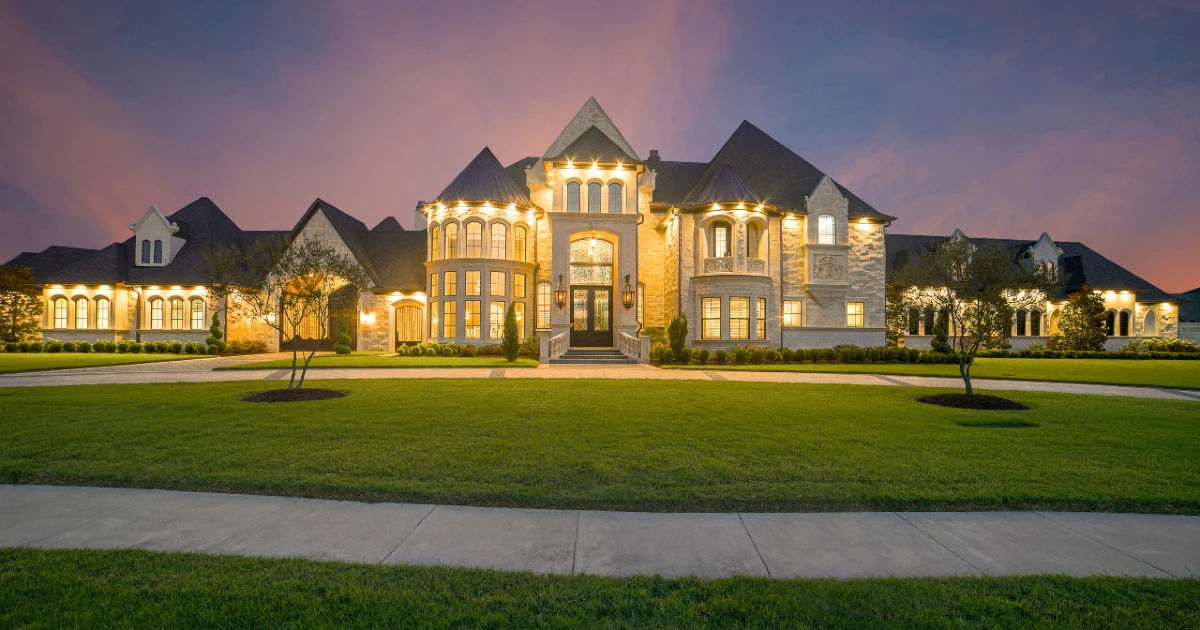If you had told someone back in 2019 that the price of lumber would increase by 377% during the next two years, they probably would have thought you were joking.
Although price fluctuation in the wood industry is common for the American market, no one expected the most recent explosion of demand for lumber. This explosion inevitably led to substantial price increases – the highest so far.
Shortly after, these changes became visible for real estate investors in the housing market.
The Pre-Pandemic Lumber Industry
Lumber has always been one of the longest-standing and inexpensive building materials in the US. If you wanted to purchase 1,000 bd ft of lumber back in 2016, it would have cost you no more than $200 – $400.
The total lumber required per single-family house is approximately 14,496 bd ft, so the lumber budget needed to build a house at that time would have reached around $2,900 – $5,800.
Today, 1,000 bd ft of lumber now costs over $1000. Sounds expensive, right? We’ll let you do the math this time.
What caused this massive increase?
The pandemic lockdown was a big trigger for many different activities. People discovered hidden talents, hobbies, and a mad desire to make improvements in their lives.
And because they were forced to stay locked at home for a long-long time, where else to make these improvements than in their own homes?

People suddenly felt the need to build, repair, and remodel their homes. Thus, there was a sudden increase in demand for building supplies during the pandemic. They started building new homes, additional rooms, decks, doghouses and making various home repairs.
None of this probably would have happened unless people suddenly had all the time in the world. With all this extra time on their hands, they thought, why not?
This sudden consumer interest was poorly anticipated by lumber producers.
The Global Lumber Shortages
The lumber producers who have benefited from the increased demand are certainly wealthy today — but they could have profited even more money had they known that the demand for lumber would radically alter with the pandemic outbreak.
Yet, the overnight demand for lumber was completely unexpected, even for them.
The onset of the global pandemic slowed down production for most industries, including the lumber industry worldwide.
Because the state of the economy was highly uncertain when the outbreak first occurred, sawmills chose to cut back production. They assumed that no one would want to build houses in the middle of a quarantine.
For this reason, they were very unprepared when the massive demand for lumber shot up shortly after the outbreak of COVID-19.

Consequently, lumber prices have risen to unprecedented levels. These prices have been driven by a combination of factors such as the reduced capacity of sawmills, a crisis of skilled workers, and a ‘boom’ in renovations and housing construction.
What happened next? The entire lumber supply chain was tense. Sawmills failed to meet the high demands even though they were processing at total capacity. Meanwhile, transportation delays and a shortage of warehouse workers led to rising costs. All of these factors are now felt in today’s prices.
Related fact: In the context of high lumber demand, the supply was similarly affected by the lack of domestic production caused by forest fires in 2020 and the limited access for international imports.
Lumber futures contracts have risen by more than 60% this year, and analysts do not expect the market to ease anytime soon. The high prices of homes make it so that a large portion of the population loses accessibility.
The Impact of Lumber Shortages on Housing Prices
Buying a new house during the pandemic is a purchase that many Americans can be proud of. Many of them took advantage of low mortgage rates and bought new homes, whether or not they were planning to do so before the pandemic occurred.
The main reason for buying new houses during the pandemic was the need for more functional spaces to accommodate working from home and online learning.
This rapid shift in demand fueled an increase in renovation and repair costs and triggered a wave of home purchases in the second half of last year.
Homebuyers were ready to expand and modernize their living spaces. They gave up on expensive cities and chose more accessible rural areas for modest incomes. The purchases led to reducing existing house stocks and the increase in demand for more new constructions.
Now, anyone who decides to construct a house will end up spending quite a bit more due to the lumber shortage. The price increase of lumber has added an average additional cost of $36,000 to the prices of newly constructed homes.
According to The National Association of Realtors (NAR), the median existing-home price for all housing types saw a record year-over-year increase of 23.6% in May 2021.
The expansion of housing prices due to record mortgage rates also led to a massive increase in consumer spending, but there has been a continuing lack of new construction because of the lumber shortage.
In September 2020, 6.5 million homes in America were sold at a seasonally adjusted annual rate, a 21% increase from the pre-pandemic. Americans did not stop there – in October, 6.85 million homes were sold, with an increase of 26.6% over the pre-pandemic period.
Related fact: The demand for buying new homes exploded in the fall of 2020 when more than 7 in 10 homes were sold, with 71% of them being on the market for less than a month.
However, buying a home right now is not nearly as affordable as the favorable low mortgage rates, with a low supply and continually rising home prices. And it will only become more expensive, ruining the plans of many future homeowners.
How Lumber Price Increases Also Affect the Cost of Ownership for Landlords
For landlords, these price increases came with both opportunities and challenges. Because the rise in the price of lumber added nearly $13,000 to the market value of an average new home, rents have also increased. Households now have to pay $119 more per month to rent a new apartment.
High lumber prices have been an obstacle for those landlords interested in build-to-rent investments. The high costs of lumber unmistakably present difficulties for some real estate investors, who now must spend more funds on new construction projects.
Here is a free resource for landlords to help during these uncertain times.
However, the future looks bright for landlords as renting properties is gaining popularity, and the trend is expected to grow. We will get more into the details of this further on.
The key take-away for landlords
With the current state of the tumultuous market, landlords now have to protect their investments more carefully. Investors are finding that getting landlord insurance is becoming a necessity to mitigate risks.
For example, a microburst wind blows off a rental property's patio roof. The trusses land on the main section of the house causing damage to the shingle roof. Due to the extreme shortage of roofing materials, the roof shingle's color can be matched for repair, leaving no other option than to replace the whole roof.
Currently, the price for a roofing company to re-shingle a roof is about $380 per square area (100 square feet). Pre- pandemic times, it was only about $270 per square area. This means the price increase went up 35% for replacing shingle roofs and roofing material manufacturers have not given any sign that they will cease their frequent price increase announcements.
A new roof that costs $10,000 before the pandemic could cost up to $13,500 now. That would be just for the roof. Say there were wooden trusses and plywood that got damaged. A pre-pandemic price for wood at $5,000 would now be $23,850. The unexpected property damage went from $15,000 (pre-pandemic) to $37,350.
Expert Tip: Due to building material shortages and high prices, unexpected damage to a rental property will be exponentially higher if incurred without landlord insurance to cover the costs. If you are without landlord insurance, it is advisable to get a quote!
Will Housing Prices Ever Return to Normal?
Like many other industries, lumber mills closed at first and reopened later in the pandemic. However, unlike other industries, the demand for their product skyrocketed. Unfortunately, the mills did not increase production enough to keep up with the rate of housing construction.
The high demand for lumber and severely restricted supply have combined to create a critical imbalance that has persisted and may continue until the end of 2021.
Though some industry experts do not expect the lumber price to return to normal anytime soon, lumber prices will eventually fall as demand decreases over time.
As more sawmills reopen in the United States and Canada, lumber availability will increase, and the total prices will decrease. Another factor that will influence lower lumber prices is labor. The availability of the COVID-19 vaccine will bring more and more people back to work, therefore increasing production.
Related fact: Currently, employment in sawmills has recently returned to its pre-pandemic level, despite the weekly wages growing to 10.4% since the beginning of the pandemic to $942 in April.
However, all these steps will be made progressively, which means that prices may return to the standard market value somewhere at the end of 2022 – or maybe even the beginning of 2023.
In the long run, after this economic roller coaster, the lucky ones will be those who invested in the lumber industry long before and those who bought houses when mortgage rates were low.
Rental Market Previsions for 2021-2022
Given the quick and unexpected growth in home values due to the pandemic lumber shortage, many renters and landlords wonder what the real estate market will look like in 2022 and what will happen to those gigantic house prices.
Although there is still no concrete answer to this ambiguity, there are some predictions about the status of the real estate market for 2022 based on current market conditions.
Lower demand in new houses
Homebuyers increased the demand for homes in 2020-2021, despite a global pandemic and economic slowdown. This demand will likely change soon, and the increase in mortgage rates will be the leading cause.
The Mortgage Bankers Association anticipates the 30-year fixed rate to reach 3.6% by the end of 2021.
The lack of housing supply won't stop
Housing supply limitations could be one of the most critical factors in determining the US housing market in 2022.
A recent report by Realtor.com on the real estate market shows that the level of stocks continues to fall in most of the US. They reported a 50% drop in the number of homes for sale in March 2021, compared to a year ago.
The real estate market halved in 2020. This was a considerable reduction in the number of homes for sale, and this short supply will continue to affect the imbalance in the housing market.
Property values remain high
Zillow Economic Research forecasts that US house prices will rise by 11.8% by April 2022 and that house prices are expected to continue to grow even more until the first quarter of 2022.
According to experts, the rise in house prices from 2020 to the present day is like the 2008 recession.
Despite the similarities between the two periods, the circumstances that led to both cases of the historical increase in the value of housing are quite different. Back in 2008, the main issue was that many people were taking on loans that they could not afford. In contrast, the current real estate market is dealing with a crisis of building materials.
Increasing the cost of rent is inescapable
While the appreciation of the value of housing is decreasing, rental prices will continue to increase in 2022, eventually exceeding the value of housing increase. The increase could result from landlords wanting to make up for their lost gains during 2020 and 2021.
Recently, rents have grown at a relatively lower rate in contrast to home value appreciation, leading experts to assume that renting is still more profitable than buying. Yet, if home price appreciation slows in 2022, rental prices could continue to grow.
Renting will be preferred over buying
Even though rental costs are expected to increase, more and more states are beginning to favor renting instead of buying. This trend will most likely continue in 2022, especially if house values will grow as expected.
In short, the real estate market will continue to struggle with the supply crisis in many US cities. Because of this, renting could become a more attractive option for residents.
This is excellent news for landlords who have gone through the uncertainty caused by the economic downturn over the past two years.







.png)
.jpg)
.jpg)


.png)